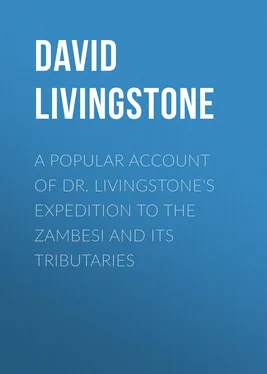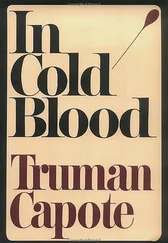David Livingstone - A Popular Account of Dr. Livingstone's Expedition to the Zambesi and Its Tributaries
Здесь есть возможность читать онлайн «David Livingstone - A Popular Account of Dr. Livingstone's Expedition to the Zambesi and Its Tributaries» — ознакомительный отрывок электронной книги совершенно бесплатно, а после прочтения отрывка купить полную версию. В некоторых случаях можно слушать аудио, скачать через торрент в формате fb2 и присутствует краткое содержание. Издательство: Иностранный паблик, Жанр: Путешествия и география, foreign_antique, foreign_prose, на английском языке. Описание произведения, (предисловие) а так же отзывы посетителей доступны на портале библиотеки ЛибКат.
- Название:A Popular Account of Dr. Livingstone's Expedition to the Zambesi and Its Tributaries
- Автор:
- Издательство:Иностранный паблик
- Жанр:
- Год:неизвестен
- ISBN:нет данных
- Рейтинг книги:4 / 5. Голосов: 1
-
Избранное:Добавить в избранное
- Отзывы:
-
Ваша оценка:
- 80
- 1
- 2
- 3
- 4
- 5
A Popular Account of Dr. Livingstone's Expedition to the Zambesi and Its Tributaries: краткое содержание, описание и аннотация
Предлагаем к чтению аннотацию, описание, краткое содержание или предисловие (зависит от того, что написал сам автор книги «A Popular Account of Dr. Livingstone's Expedition to the Zambesi and Its Tributaries»). Если вы не нашли необходимую информацию о книге — напишите в комментариях, мы постараемся отыскать её.
A Popular Account of Dr. Livingstone's Expedition to the Zambesi and Its Tributaries — читать онлайн ознакомительный отрывок
Ниже представлен текст книги, разбитый по страницам. Система сохранения места последней прочитанной страницы, позволяет с удобством читать онлайн бесплатно книгу «A Popular Account of Dr. Livingstone's Expedition to the Zambesi and Its Tributaries», без необходимости каждый раз заново искать на чём Вы остановились. Поставьте закладку, и сможете в любой момент перейти на страницу, на которой закончили чтение.
Интервал:
Закладка:
We slept under the trees, the air being pheasant, and no mosquitoes on the hills. According to our usual plan of marching, by early dawn our camp was in motion. After a cup of coffee and a bit of biscuit we were on the way. The air was deliciously cool, and the path a little easier than that of yesterday. We passed a number of villages, occupying very picturesque spots among the hills, and in a few hours gained the upper terrace, 3000 feet above the level of the sea. The plateau lies west of the Milanjé mountains, and its north-eastern border slopes down to Lake Shirwa. We were all charmed with the splendid country, and looked with never-failing delight on its fertile plains, its numerous hills, and majestic mountains. In some of the passes we saw bramble-berries growing; and the many other flowers, though of great beauty, did not remind us of youth and of home like the ungainly thorny bramble-bushes. We were a week in crossing the highlands in a northerly direction; then we descended into the Upper Shiré Valley, which is nearly 1200 feet above the level of the sea. This valley is wonderfully fertile, and supports a large population. After leaving the somewhat flat-topped southern portion, the most prominent mountain of the Zomba range is Njongoné, which has a fine stream running past its northern base. We were detained at the end of the chain some days by one of our companions being laid up with fever. One night we were suddenly aroused by buffaloes rushing close by the sick-bed. We were encamped by a wood on the border of a marsh, but our patient soon recovered, notwithstanding the unfavourable situation, and the poor accommodation.
The Manganja country is delightfully well watered. The clear, cool, gushing streams are very numerous. Once we passed seven fine brooks and a spring in a single hour, and this, too, near the close of the dry season. Mount Zomba, which is twenty miles long, and from 7000 to 8000 feet high, has a beautiful stream flowing through a verdant valley on its summit, and running away down into Lake Shirwa. The highlands are well wooded, and many trees, admirable for their height and timber, grow on the various watercourses. “Is this country good for cattle?” we inquired of a Makololo herdsman, whose occupation had given him skill in pasturage. “Truly,” he replied, “do you not see abundance of those grasses which the cattle love, and get fat upon?” Yet the people have but few goats, and fewer sheep. With the exception of an occasional leopard, there are no beasts of prey to disturb domestic animals. Wool-sheep would, without doubt, thrive on these highlands. Part of the Upper Shiré valley has a lady paramount, named Nyango; and in her dominions women rank higher and receive more respectful treatment than their sisters on the hills.
The hill chief, Mongazi, called his wife to take charge of a present we had given him. She dropped down on her knees, clapping her hands in reverence, before and after receiving our presents from his lordly hands. It was painful to see the abject manner in which the women of the hill tribes knelt beside the path as we passed; but a great difference took place when we got into Nyango’s country.
On entering a village, we proceeded, as all strangers do, at once to the Boalo: mats of split reeds or bamboo were usually spread for us to sit on. Our guides then told the men who might be there, who we were, whence we had come, whither we wanted to go, and what were our objects. This information was duly carried to the chief, who, if a sensible man, came at once; but, if he happened to be timid and suspicious, waited until he had used divination, and his warriors had time to come in from outlying hamlets. When he makes his appearance, all the people begin to clap their hands in unison, and continue doing so till he sits down opposite to us. His counsellors take their places beside him. He makes a remark or two, and is then silent for a few seconds. Our guides then sit down in front of the chief and his counsellors, and both parties lean forward, looking earnestly at each other; the chief repeats a word, such as “Ambuiatu” (our Father, or master)—or “moio” (life), and all clap their hands. Another word is followed by two claps, a third by still more clapping, when each touches the ground with both hands placed together. Then all rise and lean forward with measured clap, and sit down again with clap, clap, clap, fainter, and still fainter, till the last dies away, or is brought to an end by a smart loud clap from the chief. They keep perfect time in this species of court etiquette. Our guides now tell the chief, often in blank verse, all they have already told his people, with the addition perhaps of their own suspicions of the visitors. He asks some questions, and then converses with us through the guides. Direct communication between the chief and the head of the stranger party is not customary. In approaching they often ask who is the spokesman, and the spokesman of the chief addresses the person indicated exclusively. There is no lack of punctilious good manners. The accustomed presents are exchanged with civil ceremoniousness; until our men, wearied and hungry, call out, “English do not buy slaves, they buy food,” and then the people bring meal, maize, fowls, batatas, yams, beans, beer, for sale.
The Manganja are an industrious race; and in addition to working in iron, cotton, and basket-making, they cultivate the soil extensively. All the people of a village turn out to labour in the fields. It is no uncommon thing to see men, women, and children hard at work, with the baby lying close by beneath a shady bush. When a new piece of woodland is to be cleared, they proceed exactly as farmers do in America. The trees are cut down with their little axes of soft native iron; trunks and branches are piled up and burnt, and the ashes spread on the soil. The corn is planted among the standing stumps which are left to rot. If grass land is to be brought under cultivation, as much tall grass as the labourer can conveniently lay hold of is collected together and tied into a knot. He then strikes his hoe round the tufts to sever the roots, and leaving all standing, proceeds until the whole ground assumes the appearance of a field covered with little shocks of corn in harvest. A short time before the rains begin, these grass shocks are collected in small heaps, covered with earth, and burnt, the ashes and burnt soil being used to fertilize the ground. Large crops of the mapira, or Egyptian dura ( Holcus sorghum ), are raised, with millet, beans, and ground-nuts; also patches of yams, rice, pumpkins, cucumbers, cassava, sweet potatoes, tobacco, and hemp, or bang ( Cannabis setiva ). Maize is grown all the year round. Cotton is cultivated at almost every village. Three varieties of cotton have been found in the country, namely, two foreign and one native. The “tonjé manga,” or foreign cotton, the name showing that it has been introduced, is of excellent quality, and considered at Manchester to be nearly equal to the best New Orleans. It is perennial, but requires replanting once in three years. A considerable amount of this variety is grown in the Upper and Lower Shiré valleys. Every family of any importance owns a cotton patch which, from the entire absence of weeds, seemed to be carefully cultivated. Most were small, none seen on this journey exceeding half an acre; but on the former trip some were observed of more than twice that size.
The “tonjé cadja,” or indigenous cotton, is of shorter staple, and feels in the hand like wool. This kind has to be planted every season in the highlands; yet, because it makes stronger cloth, many of the people prefer it to the foreign cotton; the third variety is not found here. It was remarked to a number of men near the Shiré Lakelet, a little further on towards Nyassa, “You should plant plenty of cotton, and probably the English will come and buy it.” “Truly,” replied a far-travelled Babisa trader to his fellows, “the country is full of cotton, and if these people come to buy they will enrich us.” Our own observation on the cotton cultivated convinced us that this was no empty flourish, but a fact. Everywhere we met with it, and scarcely ever entered a village without finding a number of men cleaning, spinning, and weaving. It is first carefully separated from the seed by the fingers, or by an iron roller, on a little block of wood, and rove out into long soft bands without twist. Then it receives its first twist on the spindle, and becomes about the thickness of coarse candlewick; after being taken off and wound into a large ball, it is given the final hard twist, and spun into a firm cop on the spindle again: all the processes being painfully slow.
Читать дальшеИнтервал:
Закладка:
Похожие книги на «A Popular Account of Dr. Livingstone's Expedition to the Zambesi and Its Tributaries»
Представляем Вашему вниманию похожие книги на «A Popular Account of Dr. Livingstone's Expedition to the Zambesi and Its Tributaries» списком для выбора. Мы отобрали схожую по названию и смыслу литературу в надежде предоставить читателям больше вариантов отыскать новые, интересные, ещё непрочитанные произведения.
Обсуждение, отзывы о книге «A Popular Account of Dr. Livingstone's Expedition to the Zambesi and Its Tributaries» и просто собственные мнения читателей. Оставьте ваши комментарии, напишите, что Вы думаете о произведении, его смысле или главных героях. Укажите что конкретно понравилось, а что нет, и почему Вы так считаете.












![Edward Ellis - Adrift on the Pacific - A Boys [sic] Story of the Sea and its Perils](/books/753342/edward-ellis-adrift-on-the-pacific-a-boys-sic-s-thumb.webp)